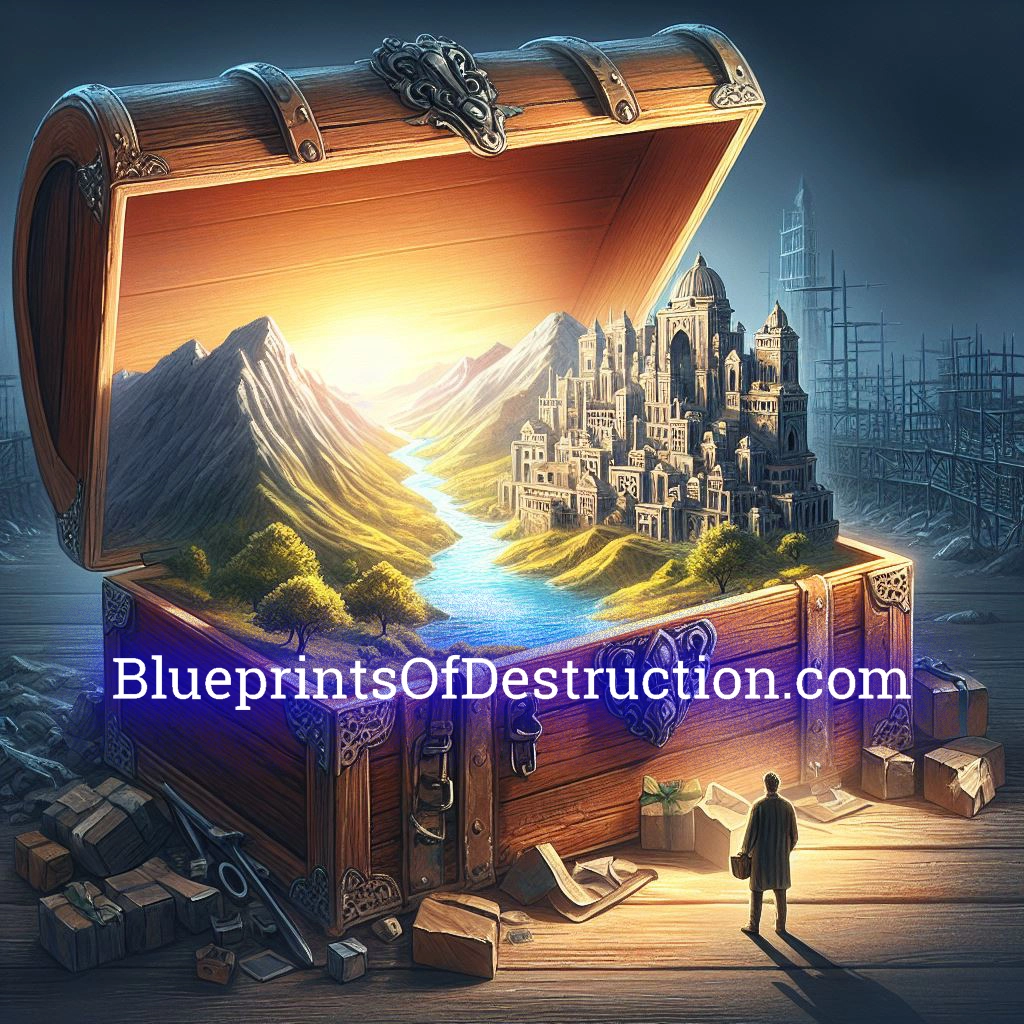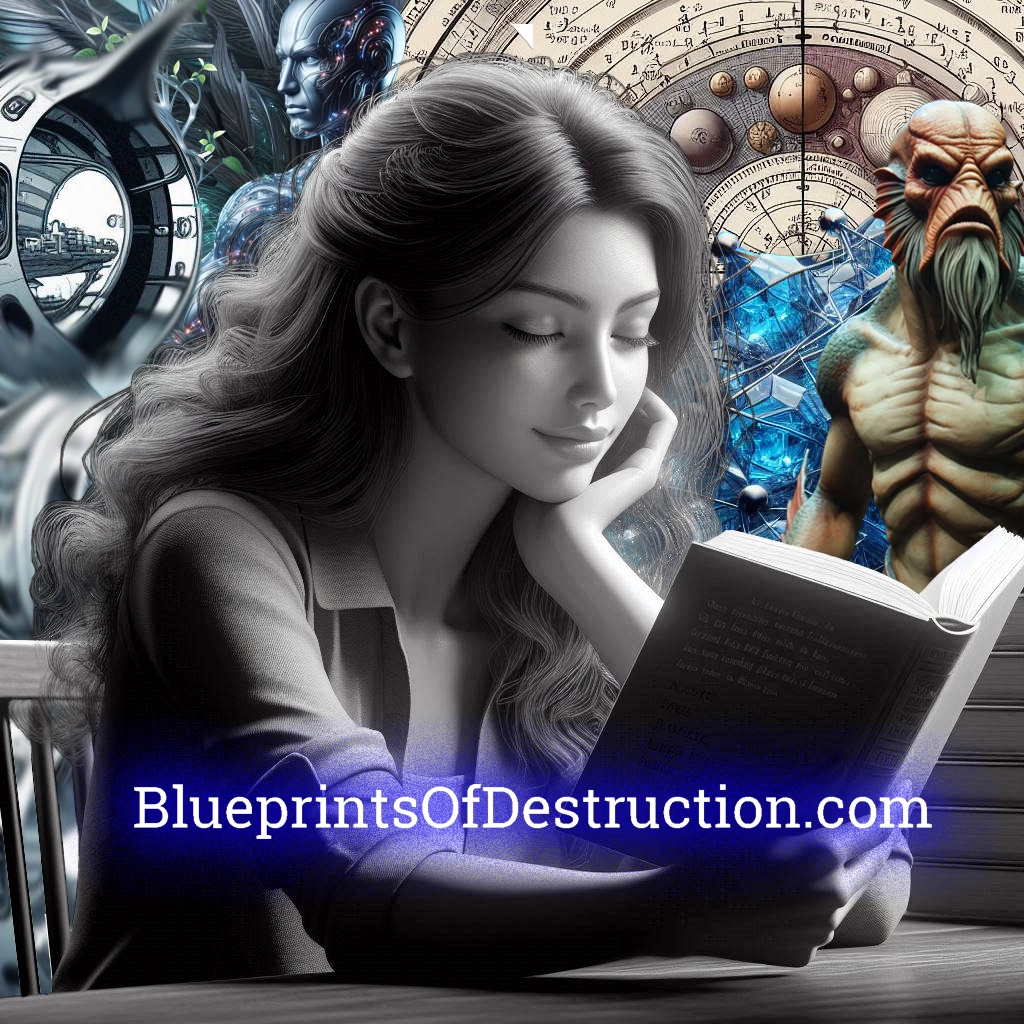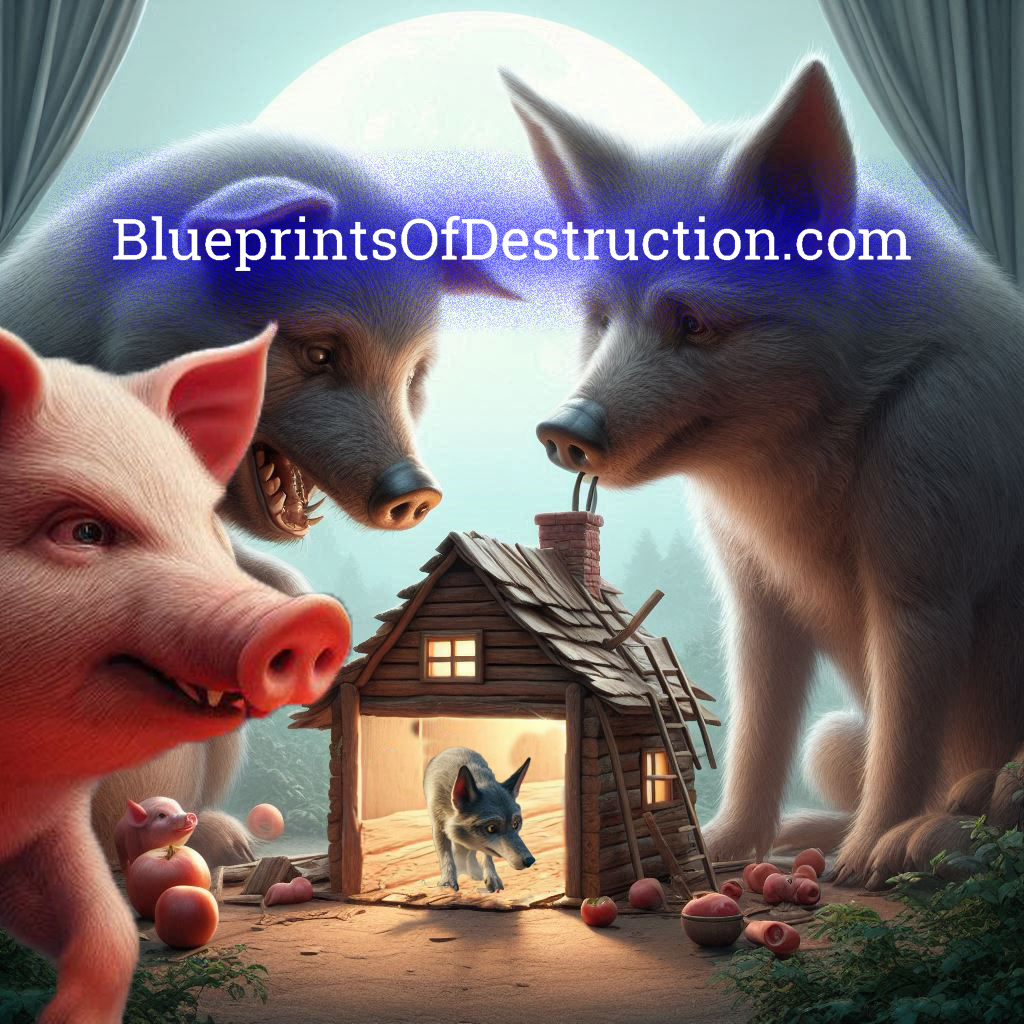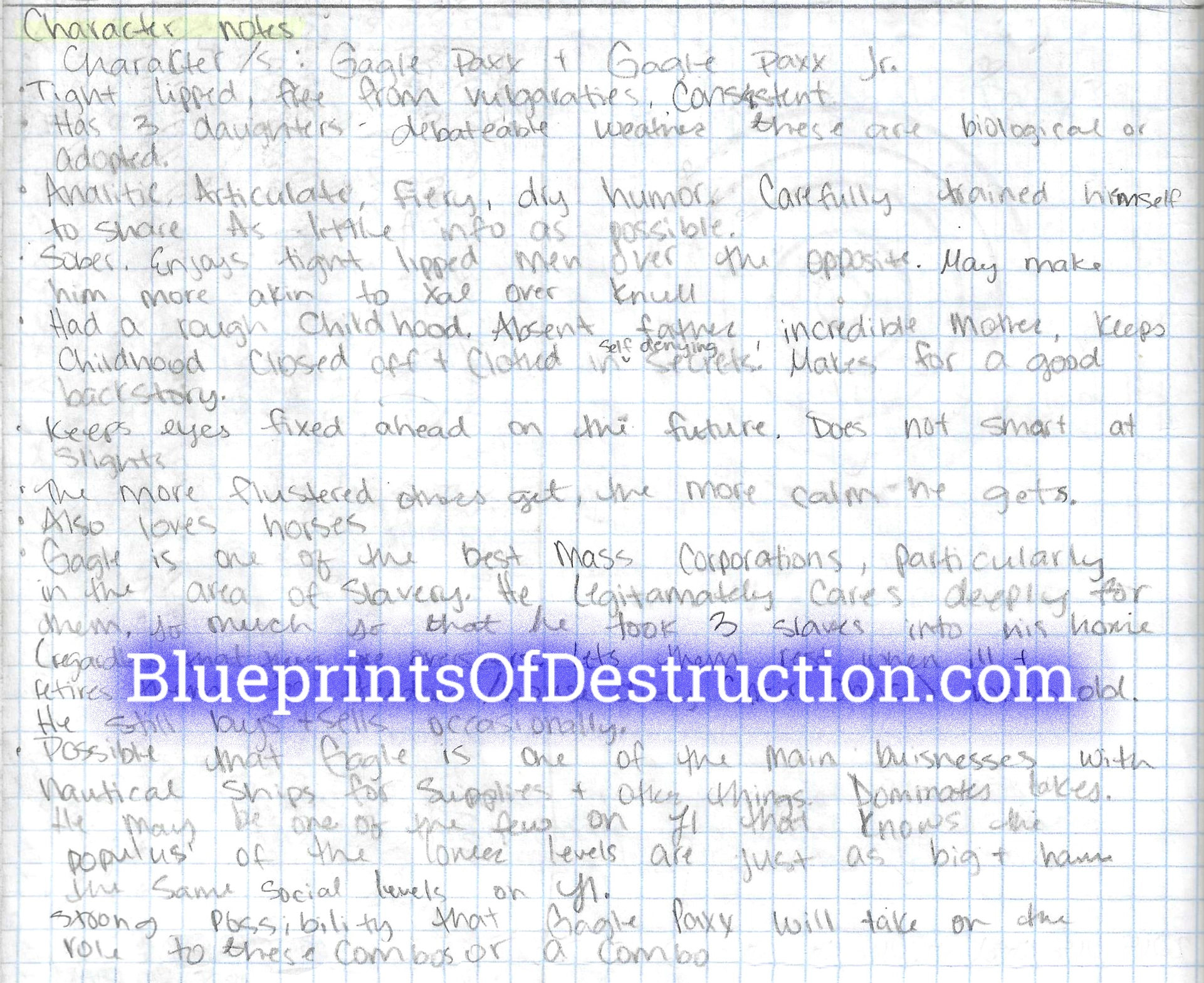- Home
- Building Characters
- Gagl Paxx, Sr.
How to Make a Character Anyone Can Love
Lucy originally came to Frank with a large request to help her write about many characters. She loved epic stories with huge “casts” of characters. What she was asking, when she asked for help to write a story, was for help to write [i[about]i] the personalities within that story. The real question is not how to make a bunch of characters to fill a story. The question is actually about how to make a character, one at a time, which will work within the confines of a set of boundaries, in order to build and mold that story.
(Click here to skip to Paxx, Sr.)

The characters within any story are the heart and soul of that experience. These are the imaginary beings which inhabit any story’s universe, and must be handcrafted by the author. They will be the ones the reader follows through a journey or adventure. They will be the ones who face conflict and resolution, and who will undergo the transformations of their character arc. These characters can (and should) be as diverse as the human experience, itself, and can range from the heroic to the villainous (and the entire spectrum between). They can be ordinary or extraordinary, and can come in all shapes, colors, and sizes (and species).
When an author is told to, “Show. Don’t tell,” that author is being directed to work out the depiction through character actions and interactions. These will often be with other characters, where both characters are described by what they do and say, rather than through raw description, exposition, or narration. That author has a responsibility to create an individual within the story who is consistent enough for the reader to identify who it is, within any context, but malleable enough to undergo a character arc which shows growth and enlargement. This is true, even if that character grows in negative ways. Villains are often developed when a character with virtuous intentions suffers loss in some form, and negatively grows.
A well-crafted character serves multiple purposes:
- Drives the plot: A character’s decisions, actions, and sometimes thoughts, in relationship to that character’s personal growth and development often dictates the direction the story will take. In Blueprints of Destruction, through the use of Randomly Generating Plot Devices, these transactions can be unexpected.
- Embodies themes: Through their triumphs and failures, characters may reflect the deeper messages and themes of the work, or at the very least should support or contrast the aspects of those messages and themes.
 A young lady reads a book, and imagines the story.
A young lady reads a book, and imagines the story.- Evokes emotions: One way for an author to know whether he or she knows how to make a character relatable is by seeing how readers respond to them. The reader should form emotional connections with characters. A well-crafted character keeps readers engaged and invested in the story, and gives the reader someone to root for (or against). That character will drive the reader to pick the story back up, and look for the next installment of a series.
- Represents perspectives: A character can offer various viewpoints, reflecting the complexity of real-world issues, while also challenging a reader's biases and opinions.
In essence, knowing how to make a character consistent and deep enough to seem real, but flawed enough to be relatable, will help ensure any reader can fall in love with them. They are not just names on a page. They are the story itself. And loving them does not always mean the reader must like them. Most readers love to hate a great villain.
Deciding How to Make a Character Good or Bad

In traditional story-telling, it is imperative to decide who the protagonist is, and who is his or her opponent. As storytelling has evolved, more and more stories tend to take on alternate approaches to this. This may range from a typically known story, where the hero and villain are generally assumed, being told from either the opposite position, or from a completely random one. Perhaps it is something like the fairy tale of the three pigs being told from the “poor” wolf’s perspective, recreating the storyline to make the pigs evil and the wolf the victim.
Whatever the change, it is becoming very common to shake up tradition. This is particularly true when using a Random-Generating Plot-Device (RGPD). As the author, you will still need to decide which direction the storyline is taking, but many of the details and much of the filler can be randomly generated. This is not necessarily directly associated with who the hero might be, who the villain is, or whether there is a clear line drawn between the two.
Sometimes random things happen in life, and the same can be true for a story. And just like in real life, sometimes the unexpected (which can even be grossly unwelcomed at the time) can be the most interesting and the most exciting to tell. And just like real life, those unexpected events and circumstances can help shape and decide on which side of the fence a given character lands, whether good or evil… or something found in between.
Gagl Paxx, Sr.
- Loosely inspired by generic masters of industry, Gagl Sr. thinks of himself as a master of his own universe.

- Character/s: Gagle Paxx, Sr. & Gagle Paxx, Jr.
- Tight lipped, free from vulgarities, consistent.
- Has three children.
- Debatable whether these are biological or adopted.
- Analytical, articulate, fiery, dry humor. Carefully trained himself to share as little information as possible.
- Sober. Enjoys tight-lipped men over the opposite. May make him more akin to Xal over Knull.
- Had a rough childhood. Absent father, incredible mother. Keeps childhood closed off and clothed in (self-denying) secrets. Makes for a good backstory.
- Keeps eyes fixed ahead on the future. Does not smart at slights.
- The more flustered others get, the more calm he gets.
- Loves horses.
- Gagl is one fo the best Mass-Corporation, particularly in the area of Slavery. He legitimately cares deeply for them. So much so that he took 3 slaves into his home (regardless that they are overseers. Lets them rest when ill & retires them to freedom/house duty(their choice) when old.
- He still buys and sells (slaves - from later edit) occasionally.
- Possible that Gagl is one of the main businesses with nautical ships for supplies and other things. Dominates Lakes (Sea Vats - from later edit). He may be one of the few on Level 1 that knows the populace of the lower levels are just as large, and have the same social constructs on L1 (edit: as on the upper levels). (edit: The social constructs of the lower levels are similar, but often more brutal and direct than the upper levels, which rely largely upon socio-political interactions.)
- Strong possibility that Gagl Paxx (Sr.) will take on the role of these combos or a combination.”
- Hulauz
- Age at time of story:
- Natural age he is limited to: